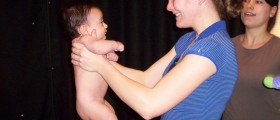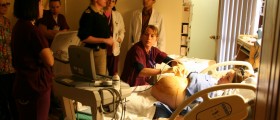
Spina Bifida - Incomplete Development of the Brain, Spinal Cord and/or Meninges
Spina bifida is a severe congenital condition affecting the brain, spinal cord and /or meninges. Some of these structures do not develop properly or completely. During the early fetal development the neural plate is a structure from which all the parts of the nervous system develop. The process of early development of the central nervous system is generally finished by the 28th day of pregnancy. If, by any chance, something interferes with the process or interrupts it in any way, a fetus ends with neural tube defects, one of which is spine bifida.
In the United States spina bifida is reported in 1,500-2,000 per more than 4 million newborns. This makes the condition the most frequent among all neural tube defects.
When it comes to classification of spina bifida, the condition can be divided into occulta spina bifida, closed neural tube defects, meningocele and myelomeningocele. Spina bifida occulta is commonly reported. It develops as a consequence of vertebral malformations. There is no open protrusion of certain parts of the central nervous system. Instead the part exposed and not prevented by the vertebrae is covered by a layer of the skin. Fortunately, spina bifida occulta is not associated with severe disability. Closed neural tube defect is characterized by defects of the spinal cord that comprise a malformation of fat, bone and membranes. While some patients have no or only a few symptoms, others develop severe disability accompanied by paralysis, urinary and/or bowel dysfunction. Meningocele is a condition in which the meninges are allowed to escape the spinal canal through an abnormal opening in vertebrae. The symptoms again range from no to quite severe and disabling ones. And finally, there is myelomeningocele, a condition that leads to irritation of exposed parts of the central nervous system such as the spinal cord and other neural elements. The damage is rather severe characterized by partial or total motor paralysis as well as sensory deficits of the body parts innervated by the spinal cord below the level of protrusion.
Can the Disorder be Prevented?
The actual cause of spina bifida has not been identified yet. Because of that it is hard to prevent the condition. It seems that there are many factors involved in the abnormal development of the neural tube including genetic, nutritional and environmental factors.
However, there are some indicators that insufficient intake of folic acid may be an underlying cause of spina bifida. So, mothers-to-be are commonly prescribed prenatal vitamins which contain sufficient amount of folic acid.
Certain studies have confirmed that intake of proper amount of folic acid can, in fact, reduce the risk of neural tube defects. This vitamin is normally obtained from dark green vegetables, egg yolks. Still, it also needs to be supplemented before and during pregnancy.
There is one more risk factor connected with spina bifida. Namely, women who have a child suffering from this disorder are at higher risk to give birth to another child with spina bifida or, perhaps, some other neural tube defect.Spina Bifida -Treatment Goals
Since there is no cure for spina bifida, doctors give their best to helps such children to live their lives as normal as possible. Treatment is always individual depending on the severity of the condition and its type. While some children need no treatment at all those with the most complex damage must undergo surgery.
It is essential to prevent infection and protect the exposed parts of the nervous system to further damage and additional trauma. The child is typically operated. The surgery is performed in such a way to close the abnormal opening and minimize the risk of infection and additional injury.
Surgery can be performed once the child is born, but better effects are achieved if the defect is corrected while the baby is still in the uterus. Fetal surgery is risky but provides with better outcome.
The child is under permanent supervision of a trained team of professionals, pediatricians, neurosurgeons being only some of them. The goal of each and every treatment approach is to increase child's mobility, strength and make him/her less dependent on family members or caregivers. Mobility is increased with physical therapy, which is sometimes extensive. Certain number of patients require mobility device (e.g. braces, crutches, wheelchairs etc.). Finally, those with impaired function of the urinary and intestinal tract require bladder catheterization and bowel management regimes.
Prognosis and Research
Fortunately, even though many patients have difficulty walking and need to use assistive devices, they are intelligent and actively participate in daily as well as social activities.
Today scientists are trying to determine whether there are genetic factors which make some children more predisposed to the disorder. Such research will provide with better insight in potential causes of neural tube defects. This way scientist will be able to recommend concrete means of prevention.
It is rather challenging to determine how the human brain and the central nervous system in general function into detail, so it is also not easy to find out how some defects occur. Hopefully, one day many mysteries of this type will be solved and many conditions will be successfully prevented.

















Your thoughts on this
Loading...